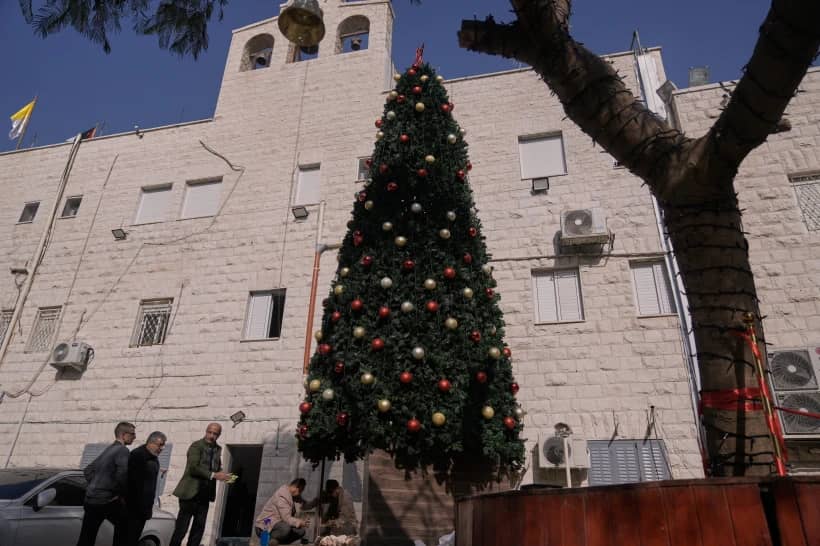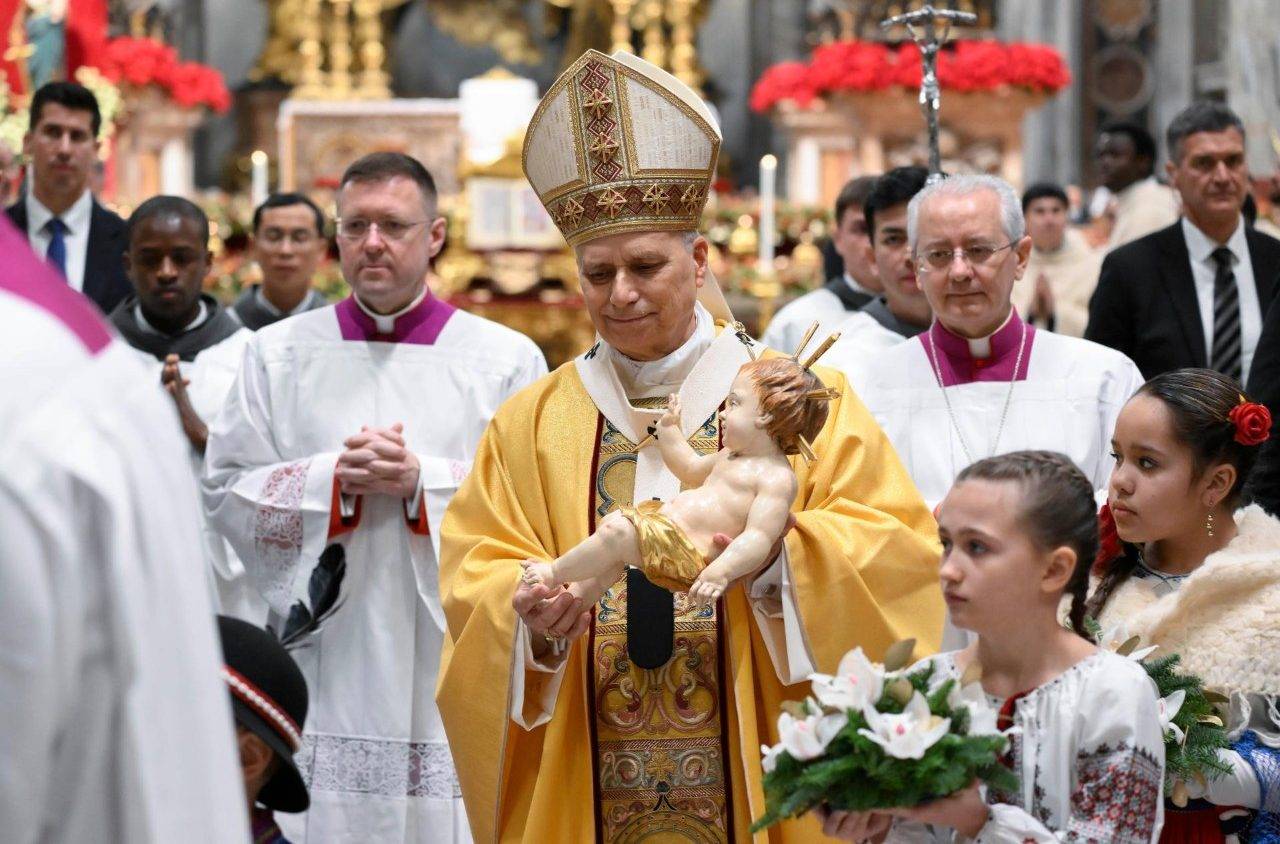A few weeks ago, Father Antonio Spadaro, an Italian Jesuit priest, co-wrote an article commenting on American Catholicism. The gist of it was that conservative Catholics were in league with Protestant preachers to push theocracy.
The article was much criticized for its ignorance of the culture, history and politics of the American church. In a withering comment, one critic said Spadaro’s piece “failed to rise to the level of mediocrity.”
This week in Commonweal another Italian, Massimo Faggioli, who is a professor at Villanova University, weighs in on American conservatives, but this time in an extended analysis and critique of “conservative converts.” As a convert with conservative instincts, it seems fair to comment on Faggioli’s observations and opinions.
(Incidentally, Austen Ivereigh also had a piece on Crux yesterday broadly addressing the same topic.)
RELATED: Pope Francis and the convert problem
First, there is much that is interesting in Faggioli’s article. He acknowledges that the wave of Protestant conversions is a unique phenomenon, and he compares it to other movements in the church: sects like the Waldensians, the rise of religious orders and the post Vatican II ecclesial movements.
He thinks the tide of converts is a unique kind of movement—one which is real, but which defies any sort of classification or official recognition. He then goes on to chide those conservative converts who criticize the very church they’ve joined. He thinks they are nostalgic for a medieval church or a pre-Vatican II church.
Like Spadaro, Faggioli is writing from the observation tower, not the trenches. As a result, he may see the big picture while missing the detail. The movement of conservative Protestants to the Catholic Church is in some ways simpler than Faggioli’s observations, and in some ways more complex.
I was brought up in a conservative Evangelical home in the 1960s. At college, I became an Anglican and went to study theology at Oxford. After fifteen years in the Church of England we converted to Catholicism. I then worked for eight years with the St. Barnabas Society — an English apostolate that assists convert clergy materially and pastorally.
I wrote some books on apologetics and Benedictine spirituality, and eventually returned to the United States to be ordained as a Catholic priest. I now serve in South Carolina, and know many fellow conservative Catholic converts. I take the phone calls of ministers on the far bank of the Tiber ready to take the plunge. I meet even more laypeople who are joyful converts, and every year as a pastor, I welcome more into our church.
What should not be overlooked is the immense price, especially the clergy converts pay to become Catholic. Most of them sacrifice their vocation and livelihood, taking their wives and families into the wilderness. Most will not be re-ordained as Catholic priests. There are few employment opportunities in the Catholic church and many of them have no other skills or training.
These are men and women with advanced degrees in every imaginable subject, who take whatever job they can get to feed their family. They take a step of faith to follow Christ’s call to join his church through amazing sacrifices that very few cradle Catholics would ever begin to contemplate. Their courage and commitment should not be ignored.
It must be admitted that a few converts have not only become traditionalists, but strident and vocal traditionalists. Their influence should not be judged by their volume. Their fanaticism has more to do with their temperament than the fact that they are converts. This is clear from the fact that there are many strident traditionalists who are cradle Catholics.
In my work with converts, I have, of course, come across those who want to become Catholics because they don’t like women priests or gay marriage, or the secular modernism that has swamped their Protestant denomination. But those who are simply reacting against elements they dislike in their own denomination usually do not manage to swim the Tiber.
Others, finding that there are feminist nuns, gay activists and modernists in the Catholic church are dismayed. When the aesthetes among them experience the brutal architecture, saccharine music and poor preaching of contemporary American Catholicism they often quietly return to their church of good taste.
When the zealous Evangelical Christians discover that the contemporary American Catholic church is full of lukewarm members who are more Italian or Irish than they are Catholic, they are disturbed. They were used to Christians being sold out for Jesus, and being members of a fired-up fellowship of Christian disciples.
What Faggioli misses is the core reason why we converted. There is a bottom line. We did not convert because we were miserable in our former church. Soon after I became a Catholic, someone asked, “Well, now that you’re Catholic do you like the Catholic Church?” I replied, “No. If I were joining a church I liked, I’d still be an Anglican. I didn’t join the Catholic Church because I liked it. I joined it because it is the true Church.”
While the cradle Catholic of a sophisticated disposition may be amused by such triumphalism, it remains true that we converted because we were convinced of the claims of the Catholic Church to be the foundation rock for Christian belief and practice. This doesn’t mean that we are all hard-line dogmatists, but it does mean that we believe there is a place to stand in the midst of the quicksand.
Some converts turn tail, but the vast majority who come into the Catholic Church stay put. They roll up their sleeves and get involved in their parish. Despite being marginalized, they have persevered and joined religious orders, been ordained, become theologians, Bible scholars, apologists, writers and journalists.
They have founded apostolates for evangelization and apologetics, worked to establish the Anglican ordinariate and formed organizations for the care of fellow converts. They have started schools, established ecumenical conversations on culture and politics, and formed apostolates to further peace, justice and defend human life.
It is discouraging therefore, to find how many members of the hierarchy and the Catholic academic establishment are quietly dismissive of converts. It is also discouraging to hear stories about members of the clergy and episcopate who first of all can’t imagine why anyone would want to become a Catholic, who seem almost totally ignorant of Protestantism and uncertain what to do with us once we’ve arrived.
Worse, there have been too many cases of converts being intentionally marginalized and excluded by the powers that be.
The English convert Ronald Knox observed that converts are rather like a bird that has got into a cocktail party. All the guests are delighted that it is there, but they haven’t a clue what to do about it.
While Faggioli makes interesting comments on the conversion of Protestants as a movement in the church, the one movement he fails to mention is the ecumenical movement. What this wave of conversions really points to, is the success of the Second Vatican Council’s push towards church unity.
I can speak for myself and many others in affirming that if it had not been for the liturgical changes and the positive words about Protestants in the Catechism of the Catholic Church and the documents of the Second Vatican Council, it would have been far more difficult for me to enter the Church. Put simply, as an Anglican minister, I asked myself what I could do to further church unity, and I decided that I would become a Catholic.
It would seem most accurate therefore, to see the conversion movement as part of the ecumenical movement. This will also help Catholics understand what gifts the converts bring to the Church. There are great treasures in the Protestant churches, and we bring those gifts with us to enrich the Catholic Church.
We also bring experience. Most of us have seen our former Protestant denominations destroyed from within by secular modernism. If we are sometimes critical of our fellow Catholics it is not because we are unaccepting of the Second Vatican Council. Instead we are critical of those who use “the spirit of Vatican 2” to embrace all the same agenda items that have destroyed the life and witness of our former Protestant churches.
Therefore, those who think the ecumenical movement is a good thing should take some time not only to engage in theological dialogue with friendly Protestants, but should also study the continued disintegration of mainstream Protestantism, ask why this is happening, and take it as a cautionary tale.
What to do about Protestant converts? My advice is to accept us as we are — warts and all. It is true that we sometimes display the gaucherie of the novice. Try to excuse our enthusiasm if it embarrasses you. If we are guilty of bad manners out of ignorance, be a good host and look the other way. If we have not yet attained your level of intellectual sophistication or European savoir faire, be patient as you would with a dull, but charming child.
We want to learn from our new Church, but we humbly suggest that there may be something you can learn from us too.
The fact is, we converts love our Church. Do we grumble about the contemporary Catholic Church sometimes. Sure. Don’t you? Isn’t that what family members do?
One of the most popular catchphrases of the contemporary Church is “All are welcome.” Surely that includes the wave of conservative converts from Protestantism.

















